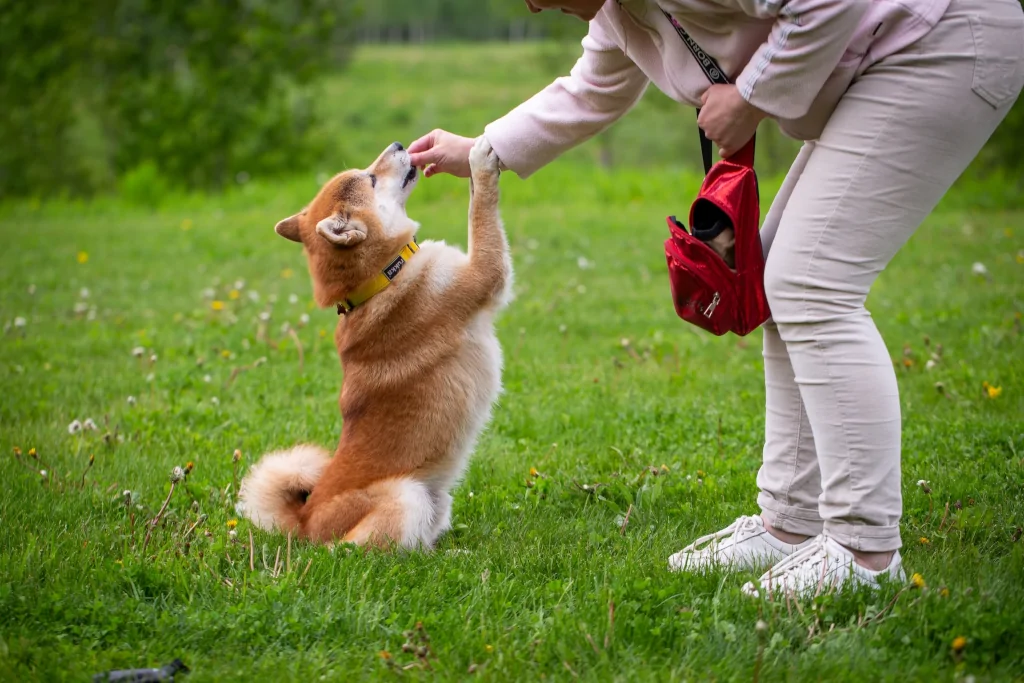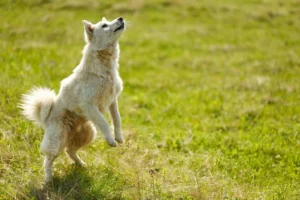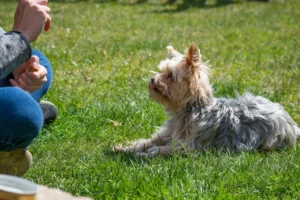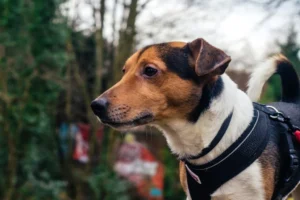Are you tired of chasing your dog around the house, trying to teach them a new trick while they seem more interested in sniffing every corner?
Or perhaps you’re at your wit’s end, attempting to break those stubborn habits that just won’t go away. If you can relate, then clicker training might just be the key to unlocking your dog’s full potential and transforming your training experience.
In this blog post, we’ll dive into the world of clicker training, explore its benefits, and guide you through beginner-friendly exercises that will have your dog sitting, staying, and walking like a pro in no time!

What Is Clicker Training?
Clicker training is a positive reinforcement method that uses a small device called a clicker to make a distinct sound.
This sound is used to mark the exact moment your dog performs the desired action or behavior, which is then followed by a reward like a treat or praise.
Over time, your dog learns to associate the click with the reward, making the clicker an invaluable tool for shaping their behavior.
It’s a fun, effective, and stress-free way to communicate with your dog and guide them towards the behaviors you want to see.
Benefits of Clicker Training
Clicker training has numerous advantages that make it a popular choice among dog trainers and pet owners alike. Some key benefits include:
- Improved communication. The clicker offers a clear, consistent signal, making it easier for your dog to understand your expectations and reducing confusion.
- Positive learning environment. By rewarding your dog’s successes, clicker training creates a supportive atmosphere that encourages your dog to keep trying and learning.
- Fast results. Thanks to the clicker’s precision, dogs can quickly grasp the connection between their actions, the click, and the reward, leading to faster progress.
Now that you have a better understanding of clicker training and its benefits, let’s explore some beginner-friendly exercises to get started.
How Does Clicker Training Work?
Clicker training relies on the concept of operant conditioning, where your dog learns that their actions have consequences – in this case, a click and a reward. The click acts as a “bridge” that connects the desired behavior to the reward, making it easier for your dog to understand what you’re asking of them.
By clicking at the precise moment your dog performs a desired behavior, and then consistently rewarding them, you’re reinforcing that specific action. Over time, your dog will be more likely to offer that behavior as they understand it leads to positive outcomes.

Starter Exercises for Clicker Training
Hand Targeting
A Simple Start: Hand targeting is a great beginner exercise that teaches your dog to touch your hand with their nose. This exercise builds trust and helps establish the basics of clicker training.
- Step-by-Step: Hold your hand close to your dog’s nose, palm facing them. When your dog touches your hand, click and reward. Repeat several times, gradually increasing the distance between your hand and your dog’s nose.
Practical Applications: Hand targeting can be used to teach your dog other commands, such as “come” or “touch,” and can be a useful way to redirect your dog’s attention in distracting situations.
Teaching “Sit”
Setting the Stage: To teach your dog to sit using clicker training, start with your dog standing in front of you.
- Step-by-Step: Hold a treat above your dog’s nose, then move it slowly toward their tail while raising it slightly. As your dog’s head follows the treat, their bottom should lower to the ground. When they sit, click and reward. Repeat this process several times, gradually fading out the treat as a lure and introducing a verbal cue for “sit.” (Full guide here)
Practical Applications: A reliable sit command can be used to manage your dog’s behavior in various situations, such as waiting for a meal or during greetings.
Teaching “Down”
Setting the Stage: Start with your dog in a sitting position.
- Step-by-Step: Hold a treat in front of your dog’s nose, then lower it to the ground and slowly move it away from them. As your dog follows the treat, they should lie down. Click and reward as soon as they are in the down position. Repeat this process several times, gradually fading out the treat as a lure and introducing a verbal cue for “down.” (Full guide here)
Practical Applications: The “down” command is useful for encouraging calm behavior and can be an essential part of establishing boundaries and manners.
Loose Leash Walking
Setting the Stage: Begin in a low-distraction environment with your dog on a leash.
- Step-by-Step: Start walking and click as soon as your dog looks back at you or maintains a loose leash. Reward them with a treat at your side. Repeat this process, gradually increasing the number of steps taken before clicking and treating.
Troubleshooting: If your dog pulls, stop walking and wait for them to turn toward you or slacken the leash. Click and reward, then continue walking. Over time, your dog will learn that a loose leash earns rewards.
Practical Applications: Loose leash walking is essential for enjoyable walks and can help prevent your dog from pulling, which can lead to injury for both you and your dog.
Might be interested: Top Training Aids for Dog Leash-Pulling
Troubleshooting Common Issues
Kikopup has a nice video on hand targeting using clicker:
FAQs
How do I choose the right clicker for my dog?
Choose a clicker that produces a consistent, clear sound and is comfortable for you to hold and operate. Some clickers come with adjustable volume settings, which can be helpful for dogs that are sensitive to sound.
When should I start clicker training my puppy?
You can start clicker training your puppy as early as 8 weeks old, as long as they are able to focus and engage in short training sessions.
Can I use clicker training to correct bad behavior?
Clicker training can be used to redirect and replace bad behavior with more appropriate actions by reinforcing desired behaviors and ignoring or redirecting unwanted ones.
Are there any risks associated with clicker training?
The primary risk with clicker training is accidentally reinforcing undesirable behaviors due to poor timing or inconsistency. To minimize this risk, practice your timing and maintain a consistent approach to training.
Alex, a passionate animal lover, has experience in training and understanding animal behavior. As a proud pet parent to two dogs and three cats, he founded AnimalReport.net to share insights from animal experts and expand his knowledge of the animal kingdom.




